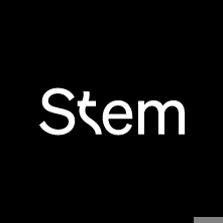One of the challenges of annual reports is their volume of content, content that may not always be interesting to the general reader. Our job is to make it more engaging and more accessible for the readers and a more streamlined process for everyone involved.
Public transport in Oslo and Akershus has undergone fantastic development. The day-to-day customer offering is always in focus, but Ruter is also responsible for developing a wider strategy for public transport across the board. The annual report has been a tool for building knowledge and understanding of this development of public transport, and by launching our first digital annual report we have succeeded in reaching even more people, says Eirik Andersen, communications manager at Ruter.
One of the success criteria for a good digital annual report is having simple and user-friendly navigation in place to make it easy to gain a quick overview of both content and structure.
Ruter’s digital report consists of two main parts: the introductory conceptual part and the more formal annual report itself. The introductory part deals with the main chapters in the report and focuses on traveller experiences which are used to illustrate key factual highlights from the past year. To make the content even more appealing, we also developed an original illustration style which is used in all parts of the report.
We have great respect for Ruters brand and know that many have a close relationship with Ruter. Making the annual report digital and even more accessible for everyone was a right move for Ruter. This is an excellent example of a major digital solution focusing on reusable editorial modules that make the website easy to use and maintain, as well as ensuring that the content is presented in a way that is attractive to readers, says Kaia Gulsvik, Project manager at Design Container.
In the navigation itself, users who are only looking for the accounts or a single note are easily able to locate what they are searching for. Information about the company’s work over the past year, its strategies for the future and its goals are also presented in an engaging way.
The report’s target audience includes politicians, business partners, shareholders and employees as well as ordinary citizens who are given the opportunity to gain an insight into how Ruter manages and organises its ticket revenue and subsidies.
The digital annual report was an extensive and time-critical project and a type of delivery with which we have extensive experience from a range of clients – in both digital and physical format.
We worked closely on content production with many departments at Ruter. Having a solid introductory process in place to clarify what the new and digital format would mean for everyone who was contributing text internally and externally was critical. This was defined in several editorial meetings and by close cooperation between us as an agency, the content producers and the project group.
Migrating from ten years of paper-based reports to a digital format meant that Ruter and Design Container had to think in new ways about user behaviour, navigation, development, design, content and project management. The Design Container team worked closely with our specialists, and cross-disciplinary cooperation and flexibility have been crucial on this project. We now have an efficient digital platform in place that we are able to build on. This gives us a basis for producing annual reports of high quality to ensure that we reach more users in the years to come, continues Andersen at Ruter.
To enhance the report as an everyday tool, we developed a comprehensive download centre. This area allows users to download graphs and diagrams as images to allow Ruter employees to download material for use in presentations to ensure a consistent and uniform corporate style. The download centre also works as ‘one source of truth’.
It’s great to see that our experience and methods from different digitalization projects works so well in cooperations with many of Ruters divisions and employees, and that the new digital annual report creates engagement both internally and externally, Gulsvik concludes.
We provided the communication concept, UX, web design, front-end and back-end development as well as content upload and project management. The technical solution is based on WordPress with Vue – and, as always, the universal design formed a key part of the work.
Since 2017, we have had a framework agreement in place with Ruter for graphic design production and have completed a range of physical and digital projects. The projects have included everything from updating the Ruter icon library of approximately 180 icons for digital use and now recently launching Ruter’s first digital annual report.
See the full report here: aarsrapport2018.ruter.no


